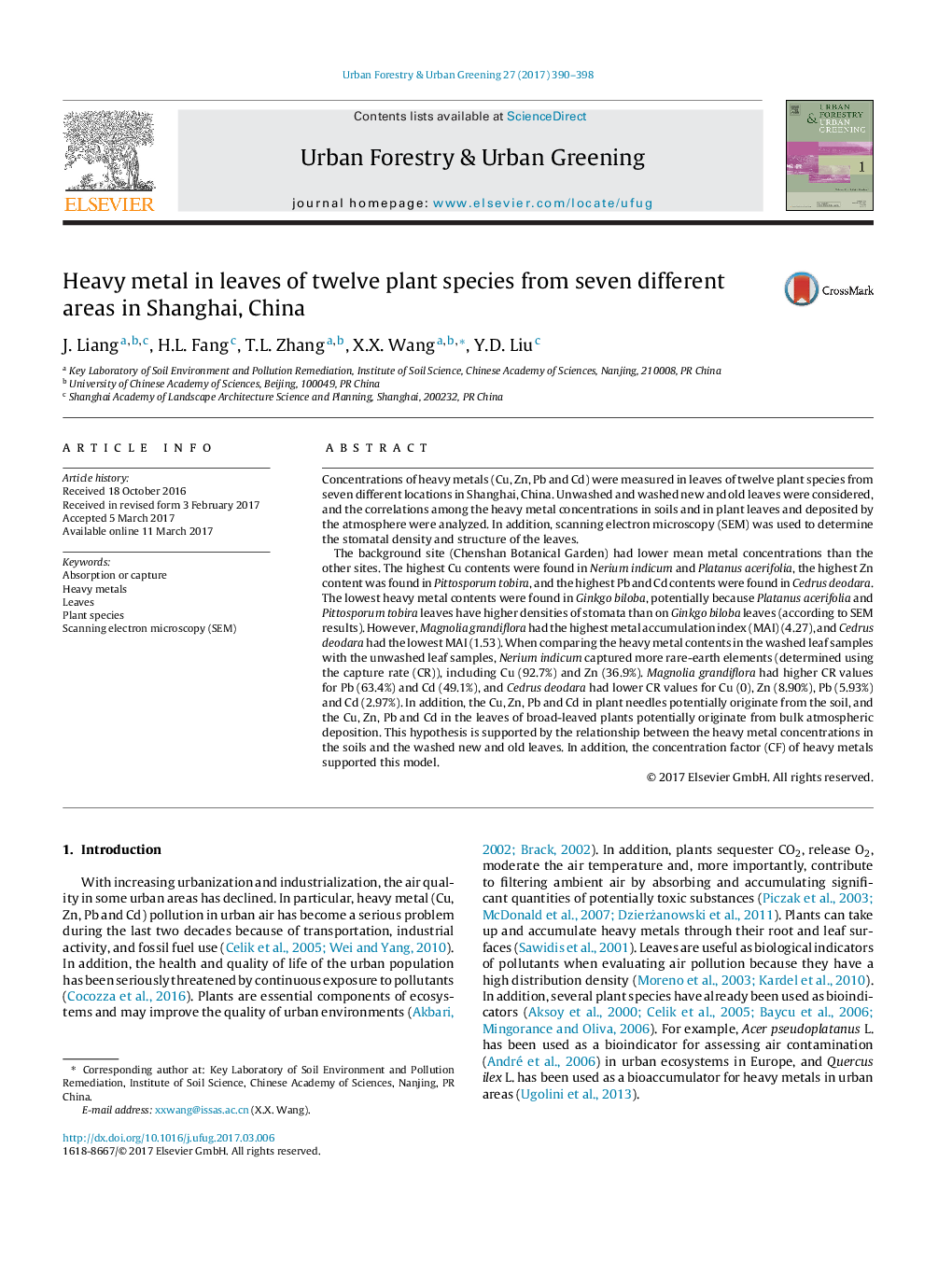| کد مقاله | کد نشریه | سال انتشار | مقاله انگلیسی | نسخه تمام متن |
|---|---|---|---|---|
| 6461789 | 1421863 | 2017 | 9 صفحه PDF | دانلود رایگان |
Concentrations of heavy metals (Cu, Zn, Pb and Cd) were measured in leaves of twelve plant species from seven different locations in Shanghai, China. Unwashed and washed new and old leaves were considered, and the correlations among the heavy metal concentrations in soils and in plant leaves and deposited by the atmosphere were analyzed. In addition, scanning electron microscopy (SEM) was used to determine the stomatal density and structure of the leaves.The background site (Chenshan Botanical Garden) had lower mean metal concentrations than the other sites. The highest Cu contents were found in Nerium indicum and Platanus acerifolia, the highest Zn content was found in Pittosporum tobira, and the highest Pb and Cd contents were found in Cedrus deodara. The lowest heavy metal contents were found in Ginkgo biloba, potentially because Platanus acerifolia and Pittosporum tobira leaves have higher densities of stomata than on Ginkgo biloba leaves (according to SEM results). However, Magnolia grandiflora had the highest metal accumulation index (MAI) (4.27), and Cedrus deodara had the lowest MAI (1.53). When comparing the heavy metal contents in the washed leaf samples with the unwashed leaf samples, Nerium indicum captured more rare-earth elements (determined using the capture rate (CR)), including Cu (92.7%) and Zn (36.9%). Magnolia grandiflora had higher CR values for Pb (63.4%) and Cd (49.1%), and Cedrus deodara had lower CR values for Cu (0), Zn (8.90%), Pb (5.93%) and Cd (2.97%). In addition, the Cu, Zn, Pb and Cd in plant needles potentially originate from the soil, and the Cu, Zn, Pb and Cd in the leaves of broad-leaved plants potentially originate from bulk atmospheric deposition. This hypothesis is supported by the relationship between the heavy metal concentrations in the soils and the washed new and old leaves. In addition, the concentration factor (CF) of heavy metals supported this model.
Journal: Urban Forestry & Urban Greening - Volume 27, October 2017, Pages 390-398
